I’ve recently reached the Classic Sauces & Pasta section of America’s Test Kitchen online cooking school. This suits me fine because there are two really nice looking recipes I’d like to tackle in this area. The first, which I’ll post below, includes an interesting version of pesto that originated in southern Italy and the second is baked manicotti, which I’m sure you’re all familiar with. I’ll prepare that second one and post my results in a few days.
The pesto used in this recipe stems from Sicily and goes by a few different names. First, we can call it “pesto alla trapanese.” If you don’t like that, you can say “pesto alla siciliana,” “pesto rosso” or “pasta cull’agghia.” As far as I know, if you’re sitting in a Sicilian restaurant and mention any of the above, someone will know what you’re referring to. This pesto is the south’s answer to the north’s pesto alla genovese. This latter type is the green pesto we all love so much.
The Recipe
This recipe is quite simple and doesn’t cost all that much. It’s a nice pasta dish that someone special would love to come home to. Since pesto is a smooth sauce, it’s best used with long, thin types of pasta, such as spaghetti or linguini. I prefer linguini because I’ve eaten spaghetti all my life and at this age, I thought I’d spice things up. Linguini it is.
Ingredients
Serves: 4
1/4 Cup Slivered Blanched Almonds
12 Ounces Cherry or Grape Tomatoes
1/2 Cup Fresh Basil Leaves
1 Garlic Clove
1 Small Pepperoncini
Regular Table Salt
Pinch of Red Pepper Flakes
1/3 Cup Extra-Virgin Olive Oil
1 Pound Linuine or Spaghetti
2 Ounces Parmesan Cheese
Step-by-Step Instructions
This recipe doesn’t take long at all to prepare. After you spend a few minutes prepping, the thing that takes the longest is waiting for the pasta to cook. Although there’s garlic involved with this dish, it’s nicely countered by the basil. Also, I thought I’d tell you up front that I added an additional pepperoncini (because I’m crazy like that) and instead of using only basil, I used a basil and parsley mixture. I’m limited on basil these days and I’ve got tons of parsley. Luckily, I enjoy this mixture.
Crush Garlic
It all starts with one garlic clove.
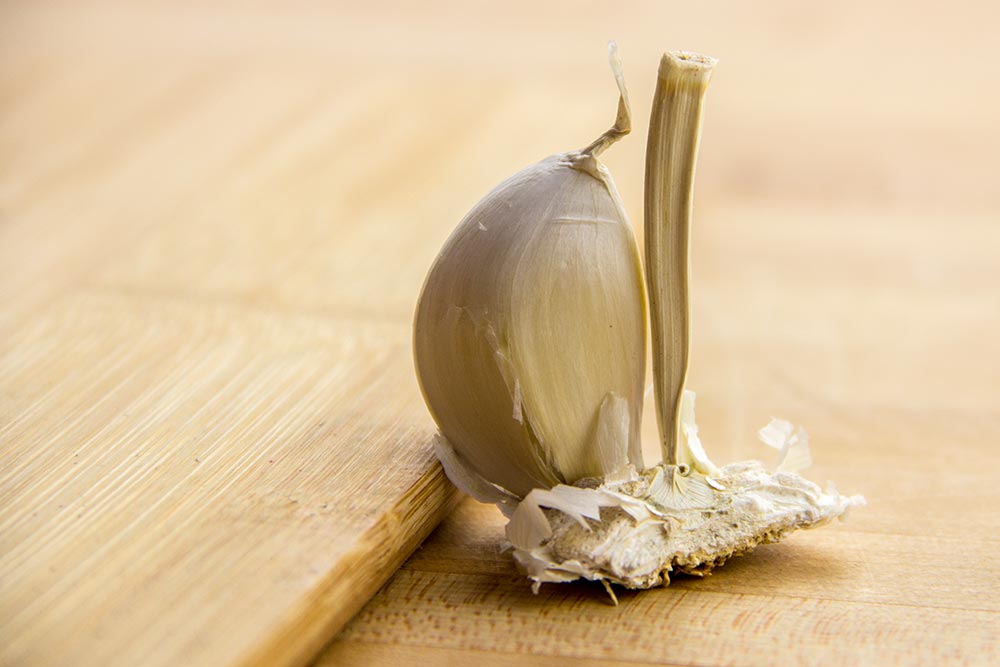
We’ve had this poor little guy sitting on our counter for a while now. I’m surprised it hasn’t begun growing. It’s the perfect specimen to use for this recipe because it was all alone and I didn’t have to crack open a new bulb.
This first step calls for peeling and mincing or crushing the 1 garlic clove. I used my new crusher, but before that, I used the rubber, hose-like, apparatus that came with the crusher to peel the clove. I’ll tell you, that little rubber peeler has come in very handy as of late. It sure makes fast work of removing the skin from garlic.
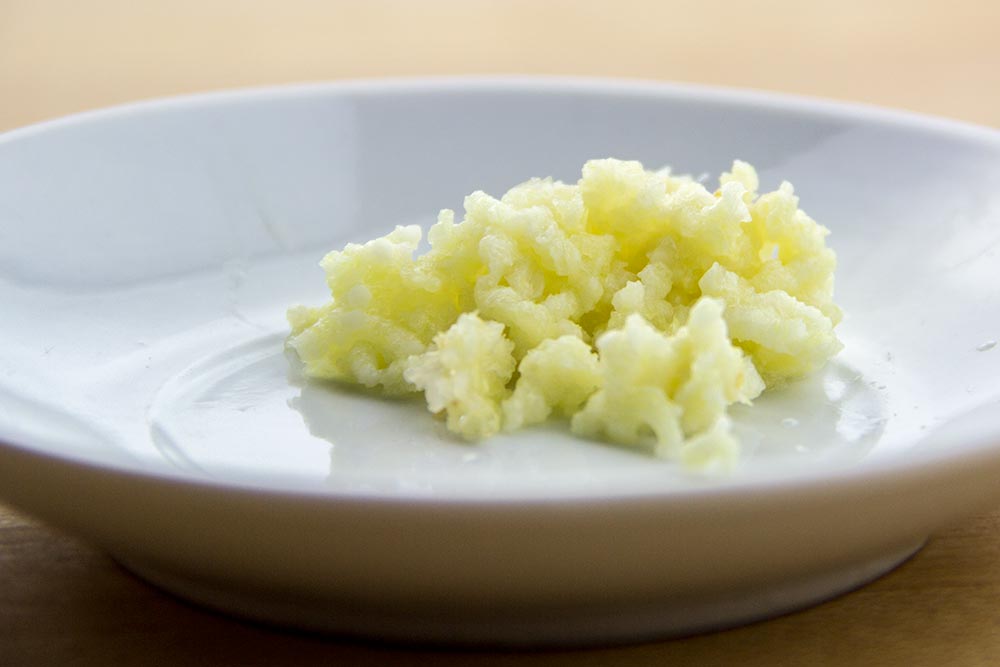
Mince Pepperoncini
For this step, you’ll need to process your pepperoncini (or two). To do this, cut off the stem, cut the pepperoncini in half and remove the seeds. Once that’s done, go ahead and discard those items and mince up what’s left. Also, I wanted to let you know that you can find pepperoncinis in a jar in the aisle with the pickles and all that. I was a bit confused about what these things were, so I thought I’d share my wisdom, in case you were unfamiliar with these as well.

Grate Parmesan Cheese
Now, grate about 2 ounces of Parmesan cheese. You’ll use half of this to add directly to the pasta later on and the other half to sprinkle on the final dish.

Toast Almonds
I know this recipe calls for slivered almonds, but I had a partial bag of leftover sliced almonds from an earlier recipe I prepared for this site. Since I had the ingredient in the refrigerator, I decided to throw caution to the wind and head over to the stove to toast 1/4 cup of them.
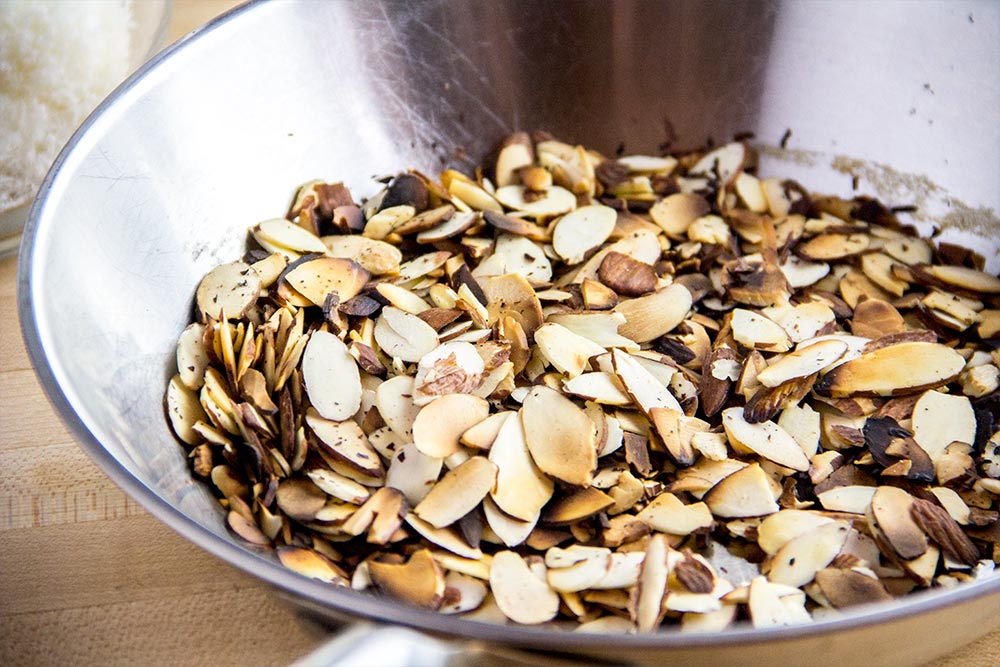
The almonds came out pretty well, but a few at the bottom got, what I’d like to call, “extra” toasted.
Boil Water for Pasta
Now would be a good time to start boiling 4 quarts of water in a large pot for the pasta. Be sure to add 1 tablespoon of regular table salt to the water as it boils. This will flavor the pasta and the water for later use.
Add Ingredients to Food Processor
At this point, go ahead and take out your food processor and add the 12 ounces of tomatoes, 1/2 cup of basil (or basil and parsley), 1 pepperoncini, 1 crushed garlic clove, 1 teaspoon of regular table salt and a pinch of red pepper flakes to it.
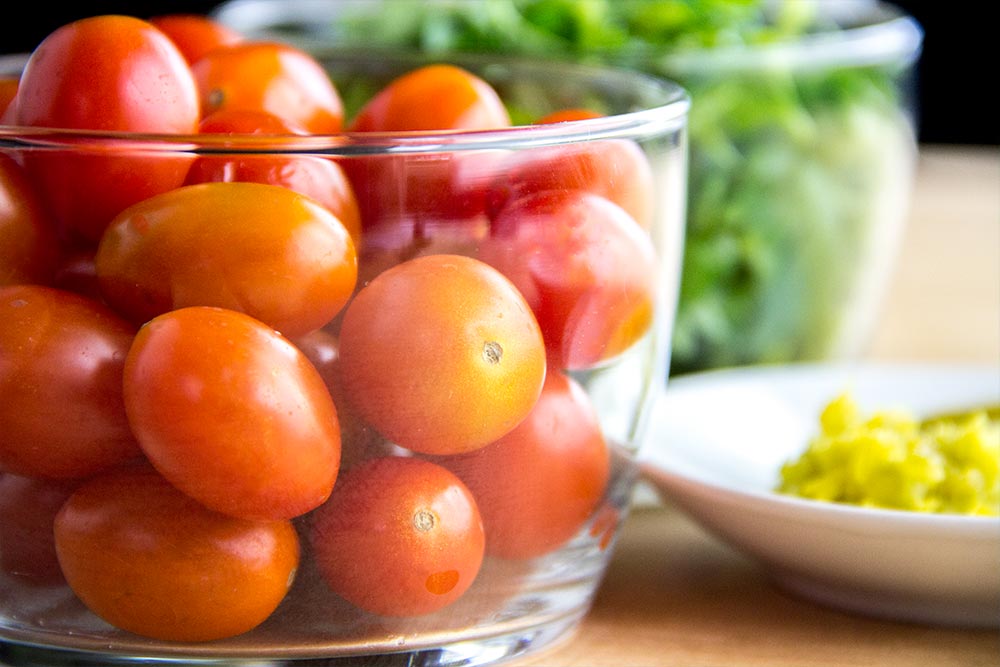
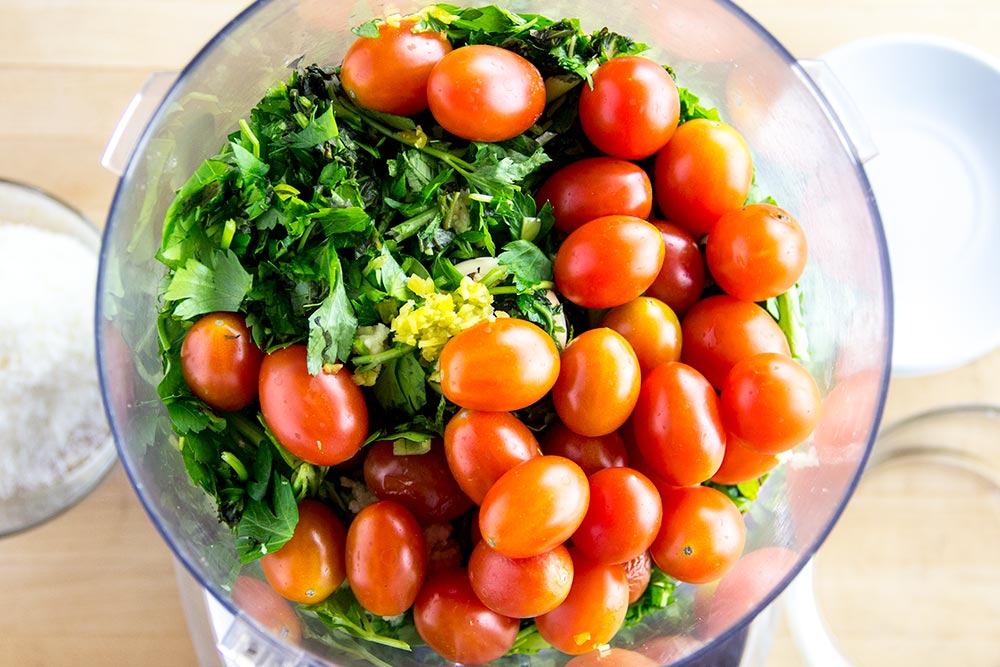
Mix Ingredients
Pulse the food processor a few times and let it run for about 1 minute. You want the mixture inside to become fairly smooth. Be sure to use a rubber spatula to clean the walls every now and then. Your pesto should look something like mine below when finished.

After the mixture looks good and smooth, go ahead and run the processor for about another 30 seconds, but this time, pour in the 1/3 cup of extra-virgin olive oil from the top.
Cook & Drain Pasta
Go ahead and add the 1 pound of whichever pasta you chose for the recipe and cook it until it’s al dente. Also, be sure to save some of the flavored water that the pasta cooked in. If your final dish is too thick, you may need to add some water to it to make it thinner.
When the pasta is finished cooking, strain it in your favorite colander and then return it to the original pot it cooked in.
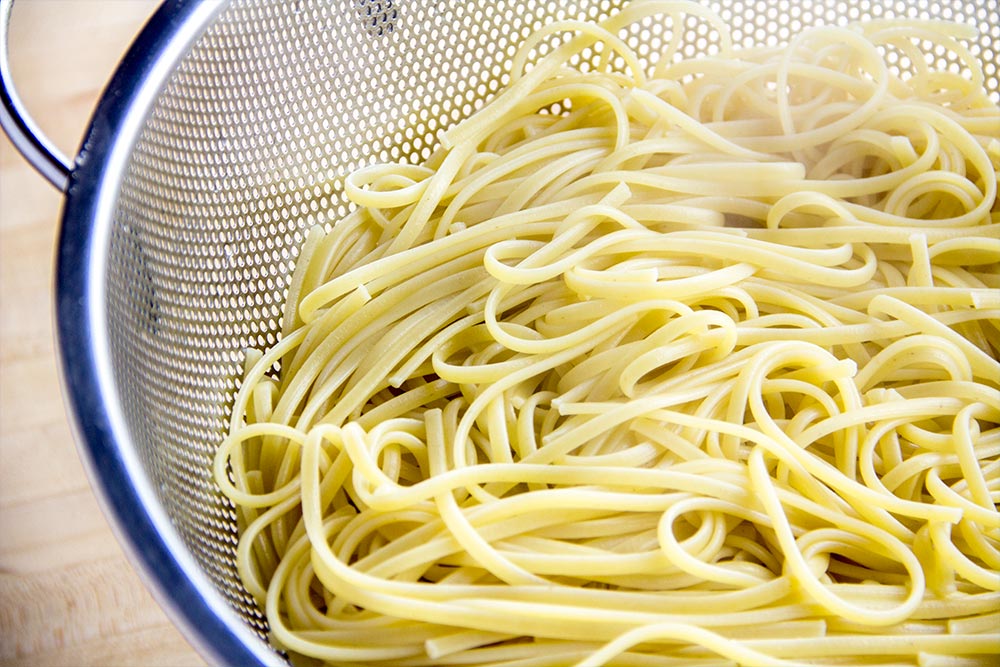
Add Pesto to Pot
Once the pasta is back in the large pot you cooked it in, add the pesto and half of the grated Parmesan cheese to it.

After everything is in the same place, stir it all together. If you notice that the pasta and pesto is too dry, add some of the reserved water to it slowly until things loosen up a bit.
Plate & Serve
If you’ve got tongs, grab them and use them to add some pasta to a bowl. When you do this, twist the tongs as you lower the pasta.
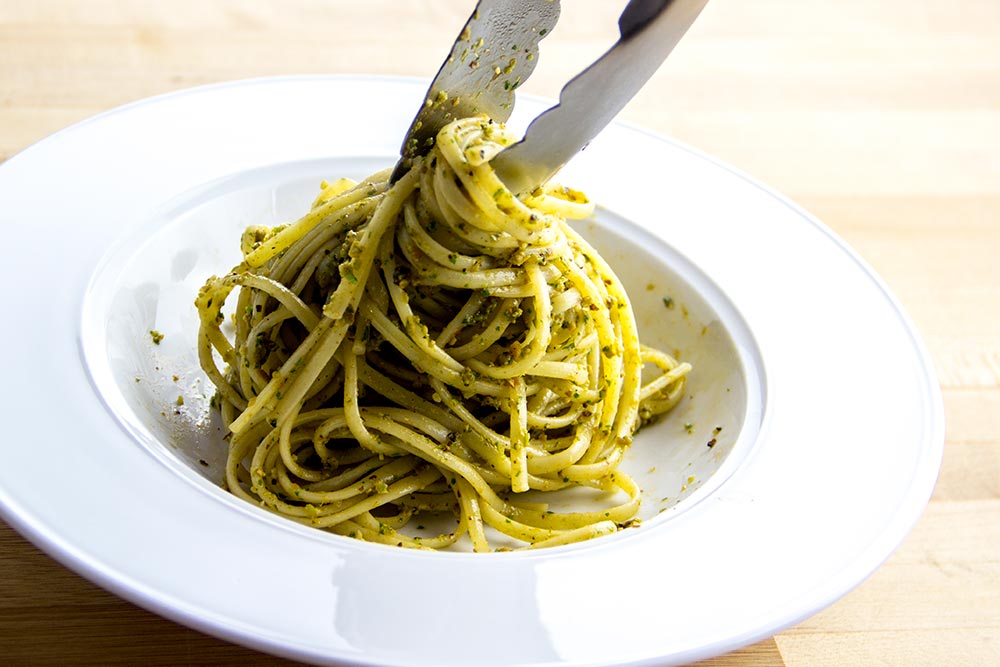
Go ahead and add some of the remaining Parmesan cheese and whatever you’d like to garnish the dish.
The Final Product
I was excited about preparing this recipe because I knew it was going to be fun to photograph. Here are a few shots I got of the final plating. It’s a great recipe – I highly suggest you try it out.
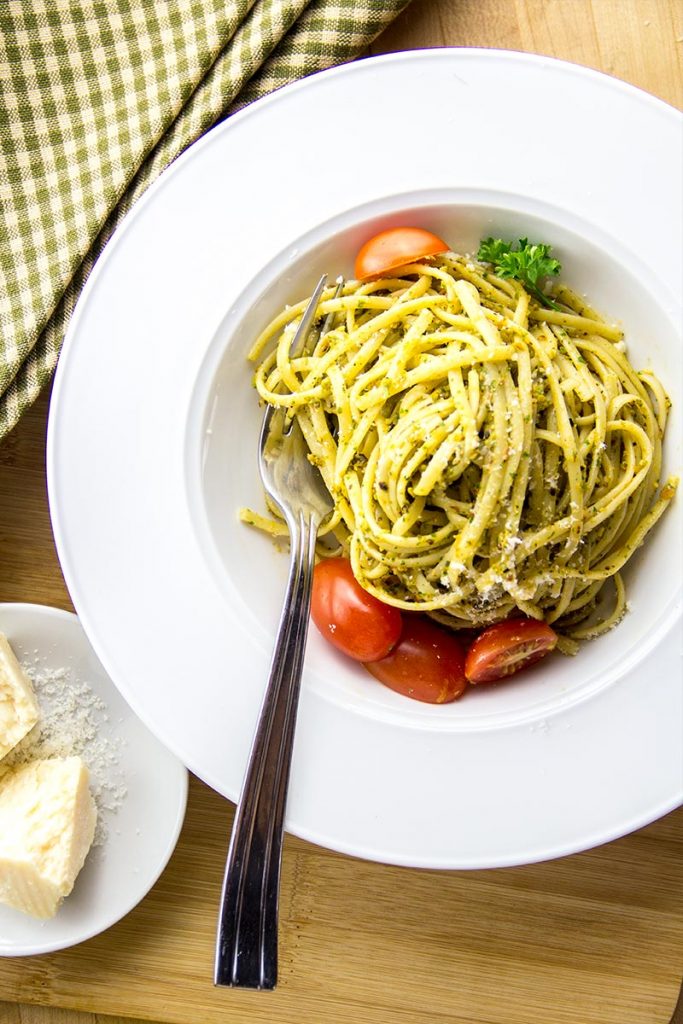
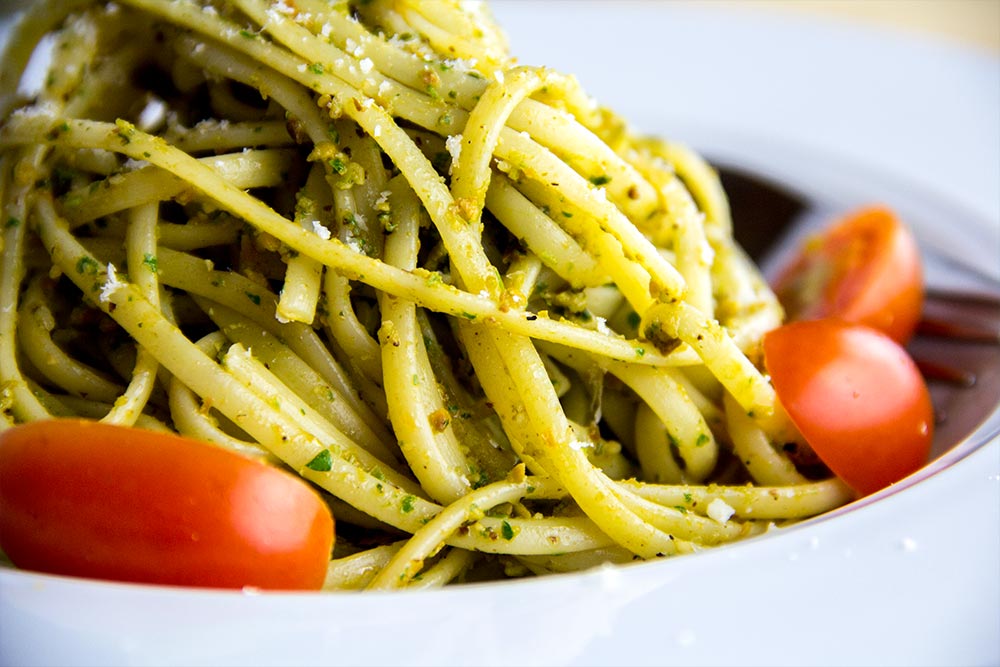
If you’ve enjoyed today’s post and found it helpful, please share it with a friend. Thanks!

Leave a Reply